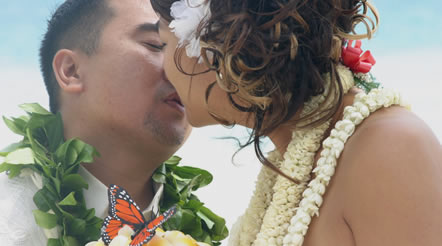
|
| Hawaiian
Wedding Culture and Traditions Each lei is made up of some 40 or 50 fresh flowers, and tied with a colorful ribbon. These flower garlands are very symbolic of Hawaiian culture and an integral part of every celebration on the island. The 'Hawaiian Wedding Song', which was of course sung by Elvis in the movie Blue Hawaii is almost always a part of the wedding service. The couple's names in the Hawaiian language may be engraved onto their wedding rings. Both the bride and groom will dress in white, and the groom will have a red sash tied around his waist. Hawaiian chiefs created political alliances by marrying both commoners and other royalty. Most chiefs had many wives and provided for adopted as well as biological children. Engagements were arranged by the parents of the prospective bride and groom during their late childhood or early adolescence. When arrangements were settled by the parents,
Both the bride and groom wear elaborate leis,
necklaces of flowers, nuts, seeds, and other plant material woven
together. Traditional Hawaiian weddings are still performed with
the addition of whatever civil or religious sanction is necessary
for legal purposes.
|

